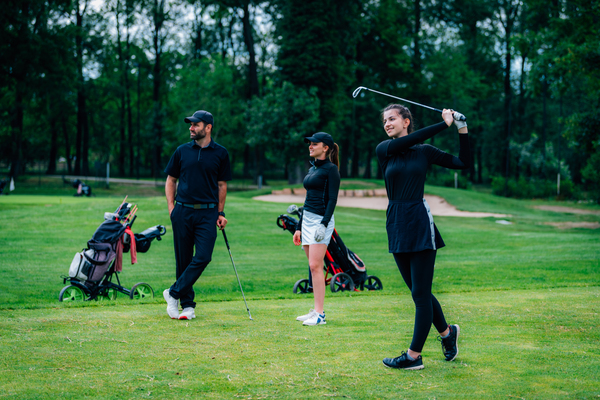Golf originated 1000 years ago in China, but the modern version of the game originated in Scotland in the 1400s. The first official mention of this club-and-ball sport was in 1457, when the Scottish Parliament banned the game, as it was a distraction from military training, which harmed the country’s national security. Obviously, the Scots preferred the game of golf to the art of archery.
The modern game and the first clubs originated in Scotland. The first written rules of this discipline were also created there. The first tournaments with a well-thought-out concept were held between Scottish cities. Soon the game of golf spread throughout England, and then around the world.

Golf clubs and equipment
Sure, good golf clubs and high-level equipment will improve your game, but they don’t make a big difference if you’re new to this club-and-ball sport. Your first clubs can get frayed, scratched, and even broken, so don’t spend a fortune on a good set until you get the hang of it.
Some tips for beginners:
- Rent a set at a golf club;
- Buy used clubs on EBay and similar sites;
- Don’t buy the complete set. For newbies, the following types of clubs are suitable: wood, 2 or 3 irons, and putter.
It is also very important to take some lessons. Many note that this sport is not intuitive at first, so you need to train your body so that the playing technique becomes natural for you. It is very important at this stage that the coach corrects mistakes and gives appropriate recommendations.
Basic strokes in golf
There are parts in golf that you won’t use for the rest of your life, but there are fundamentals you can’t live without. You need to consistently use short shots, as well as control yourself if the game does not add up.
Then you need to hit the green short, which can be a chip or a pitch. What is the difference?

A chip is a shot that causes the ball to fly through the air for a short time and then roll on the ground. A pitch is a hit after which the ball flies in a high trajectory and after landing it practically does not roll.
Chip when you don’t need to hit the ball over an obstacle such as a high rough or bunker, or when there is a lot of green space between you and the hole.
Use the pitch when you need to hit something or when you need to quickly stop the ball. The high flight of the ball after the pitch forces it to land softer and brake faster.
Major competitions and tournaments
If you’re really getting into golf, you’ll likely discover watching tournaments on TV, perhaps even attending some of them in person.
The main well-known professional tournaments are listed below with a brief description of them:
Four Majors – an annual series of four of the most prestigious men’s professional tournaments:
The US Open is held in mid-June at various venues in the US.
The Open is held in mid-July at various courses in England and Ireland. The tournament is also known as the British Open.
The PGA Championship is held in mid-August at various golf courses in the eastern United States.
The Ryder Cup takes place at the end of September.
You can also visit or participate in amateur tournaments (if your handicap permits) to experience this fascinating unifying golf atmosphere.
Correct golf etiquette
It is the most sophisticated sport where etiquette must be observed with the utmost care. Here are some basic etiquette tips for beginner players:
- Don’t talk while hitting someone;
- Don’t go to another player’s line of play;
- Do not kick the ball if you see a group playing in front of you;
- Don’t get angry after every bad hit;
- Don’t be late/arrive on time.
What is a handicap?
A handicap is an indicator of the skill of a golfer, the lower it is, the stronger the player is in front of you. Handicaps can be applied in any format of the game, but only among amateurs, there is no handicap system in the professional field.
The handicap is calculated according to certain rules based on the rounds played by the golfer, subject to certain requirements (qualifying rounds). The handicap system allows players of different levels to compete on an equal footing.
The exact handicap is considered the same for women, men and juniors. But courses are different, so the exact value is converted into a playing handicap and shows the number of handicap strokes. On each specific field, the playing handicap will be different.
Most courses will not allow playing on a course without a handicap no higher than that set by a particular club. Usually, for women, the value of the playing handicap should be no higher than 36, for men – no higher than 28. A player’s handicap is confirmed either by the national Golf Association / Federation, or by the Club of which the player is a member.
What advice do experienced players give?
The main factor that spoils the golf experience is its slowness. This gets on your nerves and leads to irritability, which negatively affects concentration and crushes all the pleasure of the game, from sunny weather and a beautiful green field. When playing in a group, do not move around the field all together. Each athlete controls his ball, this will save time. Play the game on the platforms according to your playing level. The transition to the next stage must be accompanied by the passage and development of the previous level. For example, if you are a player on small fields, then you should not go for long distances, which will only add to the number of hits.
